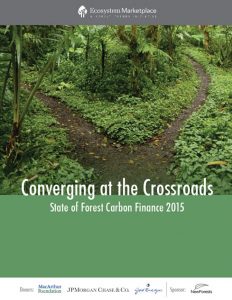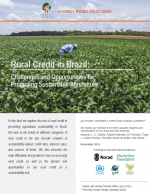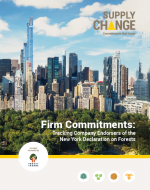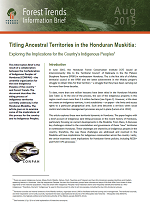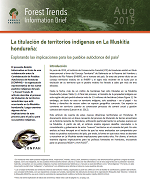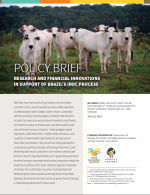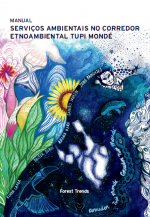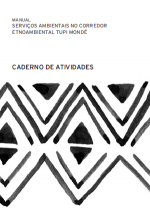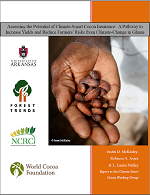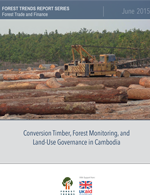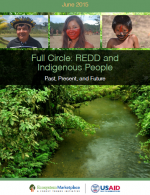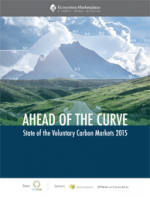State of Forest Carbon Finance 2015
Converging at the Crossroads
By Allie Goldstein, Evan NeylandCompanies and governments around the world committed US$705 million in new finance in 2014 to enhance the role of forests in combating climate change, according to a report released this week by Forest Trends’ Ecosystem Marketplace, Converging at the Crossroads: State of Forest Carbon Finance in 2015. Over the last decade, private and public sector actors […]
Rural Credit in Brazil
Challenges and Opportunities for Promoting Sustainable Agriculture
By Desiree Lopes, Sarah Lowery - Abdul Latif Jameel Poverty Action Lab (J-PAL), Forest TrendsIn this brief we explore the role of rural credit in promoting agricultural sustainability in Brazil. We look at the trends in different categories of rural credit in the last decadecreation of sustainability-related credit lines, interest rates, and sources of funds. We also describe the main difficulties that producers face in accessing rural credit, as […]
Dependent Documents
Firm Commitments
Tracking Company Endorsers of the New York Declaration on Forests
By Molly Peters-Stanley, Stephen Donofrio, Ben McCarthy, Dan Kandy - Forest Trends' Ecosystem Marketplace, Forest Trends' Ecosystem Marketplace, Forest Trends' Ecosystem Marketplace, Forest Trends' Ecosystem MarketplaceAt the 2014 United Nations Climate Summit, 180 governments, companies, indigenous community networks, and civil society organizations signaled their commitment to ending deforestation by endorsing the New York Declaration on Forests, which set a goal to halve natural forest loss by 2020 and end it by 2030. Fast forward one year, and many of the […]
Email Signup
Subscribe to any of Forest Trends’ mailing lists to keep up with the news, publications, and events that interest you.
Having Trouble?
If you experience any technical difficulties on our site, please contact Genevieve Bennett, Communications Manager.
Titling Ancestral Territories in the Honduran Muskitia
By Filippo Del Gatto - Forest TrendsThe Muskitia region in the easternmost part of Honduras is undergoing an unprecedented change in land titling. Indigenous people who have been occupying this area are receiving titles to the land, and at the end of this process, the indigenous territorial space in northeastern Honduras could cover almost 14% of the country. This is the […]
Dependent Documents
La titulación de territorios indígenas en La Muskitia hondureña
By Filippo Del Gatto - Forest TrendsPolicy Brief: Research and Financial Innovations in Support of Brazil’s INDC Process
With less than five months to go before the UN climate summit in Paris, a 90% reduction in deforestation nation-wide is within reach for Brazil. Combined with the country’s recent pledge to reforest 12M hectares of land, this reduction would allow the world’s most forest-rich tropical nation to achieve zero net deforestation and zero net […]
Manual: Serviços Ambientais no Corredor Etnoambiental Tupi Mondé
Dependent Documents
Assessing the Potential of Climate-Smart Cocoa Insurance
By Justin D. McKinley, Rebecca A. Asare, L. Lanier NalleyThere is now widespread consensus that Ghana should adopt a climate-smart cocoa (CSC) approach, and significant steps have been made towards implementing this vision. A CSC Working Group established in 2011 identified key gaps that needed to be addressed or improved for CSC to reach a desired future state, and recommended a focus on increasing […]
Conversion Timber, Forest Monitoring, and Land-Use Governance in Cambodia
By Forest TrendsClick here to download the report [6 MB] Click here to download the printable report(NOTE: large file!) [28 MB] Click here to download the press release In many countries, the accelerated clearing of forests for agricultural purposes has resulted in the rapid growth of so-called “conversion timber” in recent years. Cambodia is no execption. […]
Full Circle: REDD and Indigenous People
Past, Present, and Future
Indigenous people have managed their land sustainably for hundreds of years. They have, as a result, contributed the least to climate change and have even prevented large amounts of carbon from being released into the atmosphere through forest clearing and degradation. However, unless something changes soon, they will suffer the most from its consequences. If […]
State of the Voluntary Carbon Markets 2015
Ahead of the Curve
By Kelley HamrickJune 3, 2015 | Washington, D.C. | Companies, governments, and individuals voluntarily spent just under $4.5 billion on conservation and clean energy over the past decade by purchasing nearly 1 billion carbon offsets, finds a new report released on the sidelines of this week’s international climate talks in Bonn, Germany. The Forest Trends Ecosystem Marketplace […]

